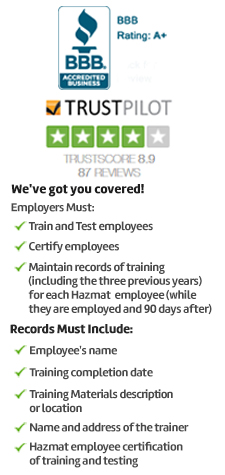
OSHA Oil Spill Cleanup Hazards Overview

Workers involved in oil spill cleanup and response operations face different range of hazards and health risks. This online OSHA oil spill cleanup hazard overview course provides comprehensive analysis of the impending hazards, risks and dangers workers face while involved in oil spill cleanup and response and relief operations in both offshore and onshore work environments.
As different workplaces offer different kinds of risks and dangers to workers, this course addresses various risks workers face due to slip and fall, heat, drowning, fatigue, loud noise, poisonous insects and wild species and fire and blasts.
Even workers can face health issues due to handling oil constituents and byproducts, crude oil, cleaning products, dispersants and other chemicals during cleanup process.
Governing regulations
OSHA has formulated regulations for training and safety procedures for workers associated with oil spill response and cleanup operations.
Course Overview
This online safety course aims to provide participants with safety awareness related to oil spill response and cleanup activities. It describes relevant safety standards as prescribed by OSHA, risk factors, health hazards, risk control measures, safety preparedness and self protective equipment for workers.
Who Must Take this Course?
Irrespective of hierarchy, all workers involved in oil spill cleanup response must have this safety certification.
Course Format
Our OSHA Oil Spill Cleanup Hazards Overview Training course has been bundled with high quality preparatory material such as easy to understand content, audio and graphical explanations, case studies and good numbers of practice questions for students to prepare ahead of the final exam.
All successful candidate of this safety course will be getting a hard copy of course completion certificate along with a wallet card.
Continuing education credits?
Each candidate completing course will receive 0.1 CEUs (or 1 CMEs) which they can mention in their personal profile.
Topics Covered
- what the relevant standards cover,
- worker information,
- specific hazards, such as:
- chemical and crude oil
- fatigue and heat stress
- sunburn
- eye injuries
- slips, trips and falls
- vehicles and boats
- equipment
- biological hazards (snakes, mosquitoes)
- emergencies and incidents,
- protecting yourself,
- the effects of oil on the environment, and
- hazard controls, including:
- engineering and technological solutions
- work practices and training
- Personal Protective Equipment

 NEBOSH CERTIFICATE
NEBOSH CERTIFICATE NEBOSH DIPLOMA
NEBOSH DIPLOMA IOSH
IOSH SAFETY DIPLOMA
SAFETY DIPLOMA CPD UK
CPD UK ROSPA UK
ROSPA UK FOOD SAFETY
FOOD SAFETY 



